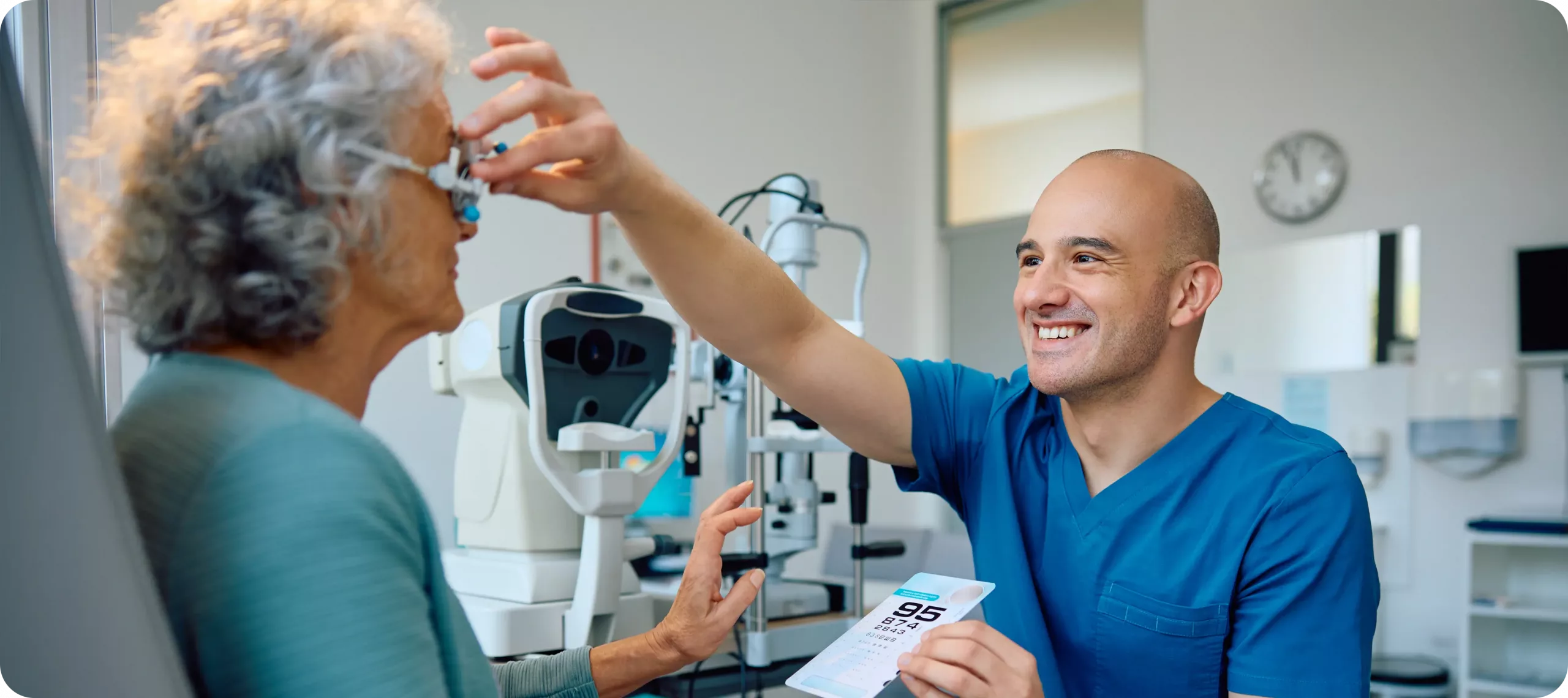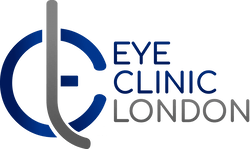How Long Off Work After Lens Replacement Surgery?

Lens replacement surgery, also known as refractive lens replacement (RLE) or clear lens extraction, is an increasingly popular procedure to correct vision problems such as presbyopia, hyperopia, or early cataracts. While it can be life-changing for your vision, one of the most common questions patients ask is: “How long off work after lens replacement surgery?”
Recovery times can vary depending on individual health, occupation, and the specifics of the procedure. Understanding the typical healing timeline, factors that can delay recovery, and strategies for a smooth return to work can help you plan your schedule effectively.
In this guide, I’ll break down everything you need to know about returning to work after RLE, offering tips to ensure a safe and comfortable transition back to your daily routine.
Understanding Lens Replacement Surgery

If you’re considering lens replacement surgery, you might be wondering exactly what it involves. Refractive lens replacement (RLE) means your natural lens is removed and replaced with an artificial intraocular lens (IOL) designed to correct your vision. While the procedure is very similar to cataract surgery, the main goal here is usually to improve your vision rather than treat a cloudy lens.
Here’s what you can expect from RLE:
- Short procedure time: Each eye usually takes less than an hour, so the process is quick and convenient.
- Minimally invasive: The surgery uses tiny incisions, which means you’ll likely heal faster and face fewer complications than with more invasive procedures.
- Rapid visual improvement: Many people notice a difference in clarity within just 24–48 hours, letting you get back to your daily activities quickly.
- Long-term benefits: With the right IOL, you can reduce your dependency on glasses or contact lenses, sometimes even for reading and distance vision.
Even though RLE is generally straightforward, your eyes still need careful monitoring while you recover. You’ll want to follow your eye specialist’s advice closely, protect your eyes from strain or injury, and attend all follow-up appointments to make sure everything is healing properly.
By understanding what to expect, you can feel more confident and prepared for the procedure and focus on enjoying the clearer vision it can give you.
Typical Recovery Timeline After Lens Replacement Surgery

Recovering from lens replacement surgery is usually quicker than you might expect, but knowing what to anticipate at each stage can help you plan your schedule and feel more confident about the process. Here’s a breakdown of what your recovery may look like:
- Immediate Post-Operative Period (Day 0–2)
- Vision: Right after surgery, your vision might feel blurry, hazy, or slightly “off.” This is completely normal as your eyes adjust.
- Discomfort: You may notice mild irritation, watery eyes, or a sense of pressure.
- Restrictions: Avoid rubbing your eyes, heavy lifting, or prolonged exposure to bright sunlight.
During these first couple of days, your main priority is rest. If your work is mostly desk-based, you might be able to handle light tasks from home, but listen to your eyes they need minimal strain.
- Early Recovery (Day 3–7)
- Vision stabilisation: Your sight gradually becomes clearer each day.
- Reduced discomfort: Any mild soreness or itching usually starts to ease.
- Follow-up: You’ll typically see your ophthalmologist for a check-up to ensure your eyes are healing as expected.
At this point, many people can return to light office work, though it’s important to take regular breaks from screens and continue protecting your eyes.
- Intermediate Recovery (Week 2–4)
- Vision: By now, most patients can see well enough for daily activities like reading, commuting, and general work.
- Activities: You can usually resume normal routines, including going to the office or running errands.
- Precautions: Keep using your prescribed eye drops, avoid swimming or heavy lifting, and continue protecting your eyes from dust and sun exposure.
If your job involves physical labour, waiting until the end of week two is wise to prevent strain and ensure your eyes heal properly.
- Long-Term Recovery (Month 1–3)
- Full adaptation: Your eyes continue adjusting to the new lens over several weeks.
- Optimal vision: Most people reach their best vision anywhere between four and twelve weeks post-surgery.
- Ongoing care: Regular check-ups help monitor your eye health and catch any minor issues early.
By the first month, you can usually return to all your normal work and recreational activities, though everyone heals at a slightly different pace. Staying consistent with eye care and follow-up visits will help you get the most out of your new vision.
Factors Affecting How Soon You Can Return to Work
How quickly you can get back to your usual routine after surgery depends on several factors. Everyone heals at their own pace, but here’s what can influence your recovery timeline:
- Type of Work
The kind of job you do makes a big difference.
- If you have a desk job, you can usually return to work within two to three days, especially if you feel comfortable looking at screens.
- If your work is physically demanding, such as lifting heavy objects or working outdoors, you might need at least a week or two before you’re ready to resume full duties.
- If your job involves a lot of visual focus, like long hours at a computer, you may need to ease back in gradually. Taking short breaks and adjusting screen brightness can help reduce eye strain.
- Your Age and Overall Health
Your general health plays a big part in how fast you recover.
- If you’re younger and in good health, your body will likely bounce back more quickly.
- If you have ongoing health issues or conditions that slow healing like diabetes or high blood pressure you might need a little extra time before you feel ready to return.
- Complications or Side Effects
Although rare, certain complications can slow your recovery.
For instance, an infection or a temporary rise in eye pressure may require additional care before you get back to normal activities. The best way to avoid setbacks is to follow your ophthalmologist’s aftercare instructions carefully use your prescribed eye drops, avoid rubbing your eyes, and attend all follow-up appointments.
- Type of Intraocular Lens (IOL)
The kind of lens you receive can also affect how quickly your vision settles.
- With standard monofocal lenses, most people notice clearer vision and adapt quite quickly.
- If you have multifocal or toric lenses, your eyes and brain may take a bit longer to adjust, especially when switching focus between near and distant objects.
Tips for a Smooth Return to Work
Getting back to work after refractive lens exchange (RLE) can feel exciting especially once your vision starts to clear. Still, it’s important to give your eyes the care they need during those first few weeks. Here are some simple but effective ways to make your return as comfortable and stress-free as possible:
- Follow All Post-Operative Instructions
Your ophthalmologist’s aftercare advice is there to protect your results and prevent complications.
Make sure you:
- Use your prescribed eye drops exactly as directed to reduce inflammation and prevent infection.
- Wear your protective eyewear when recommended, especially while sleeping or when in dusty environments.
- Attend all your follow-up appointments so your doctor can check that your eyes are healing properly.
Skipping any of these steps can delay your recovery even if you feel fine.
- Limit Screen Time at First
It’s tempting to jump straight back into long hours on your laptop or phone, but your eyes will thank you if you take it slow. In the first few days, try to keep screen sessions short, then gradually build them up as your comfort improves.
If your job involves a lot of computer work, follow the 20-20-20 rule: every 20 minutes, look at something 20 feet away for 20 seconds. This helps reduce digital eye strain and keeps your vision sharp throughout the day.
- Take Regular Breaks
Frequent breaks aren’t just about resting your eyes they also help your body recover overall. Stand up, stretch, and blink often to keep your eyes moist and relaxed. Even a quick walk away from your desk can make a difference. The goal is to avoid pushing yourself too soon, especially in the first week back.
- Protect Your Eyes
Your eyes are more sensitive during the healing phase, so a bit of extra protection goes a long way.
- Wear sunglasses outdoors to shield your eyes from bright light and UV exposure.
- Avoid dusty, windy, or smoky environments, as these can cause irritation or dryness.
- Hold off on swimming or using makeup around the eyes until your doctor says it’s safe.
These small precautions can help keep your vision stable and your eyes comfortable as they continue to heal.
- Communicate with Your Employer
If you’re not quite ready to jump straight back into full-time hours, talk to your employer about short-term adjustments. Many people find that flexible hours, reduced screen time, or temporary remote work make the transition smoother. Being upfront about your needs helps you ease back into your routine without overstraining your eyes or energy levels.
When to Seek Medical Advice
Most people recover from refractive lens exchange (RLE) without any complications, but it’s still important to pay attention to how your eyes feel in the days and weeks after surgery. Minor dryness, mild discomfort, or slight redness are all normal during the early healing phase. However, if something feels “off” or your symptoms suddenly change, it’s best not to ignore it. Trust your instincts your eyes are incredibly sensitive, and even small changes can signal that something needs attention.
You should contact your ophthalmologist straight away if you experience any of the following:
A Sudden Decrease in Vision or Flashing Lights
If your vision suddenly becomes blurry, dim, or you start seeing flashing lights or floating spots, don’t wait to see if it improves. These could be signs of a retinal issue or increased eye pressure both of which need immediate medical assessment. Quick treatment can make a huge difference in protecting your sight.
Severe Pain or Discomfort That Isn’t Eased by Medication
It’s normal to feel some mild irritation, dryness, or a scratchy sensation for a few days after RLE. However, if your pain becomes intense, throbbing, or doesn’t improve with the medication your doctor prescribed, that’s a red flag. Persistent or severe pain could point to inflammation or infection, which should be treated as soon as possible.
Unusual Discharge or Swelling
While a small amount of watering or puffiness is part of normal healing, thick discharge, yellow or green fluid, or pronounced swelling are not. These symptoms often suggest an infection. Your ophthalmologist can identify the cause and start the right treatment quickly to prevent further irritation or complications.
Persistent Redness or Irritation
A little redness is common right after surgery, but it should gradually fade within a few days. If your eye looks increasingly red, feels gritty, or you’re sensitive to light for longer than expected, it’s worth getting checked. Sometimes, persistent irritation can indicate dry eye syndrome, inflammation, or an allergic response to your drops all of which can be managed effectively once diagnosed.
Frequently Asked Questions:
- How soon can I realistically get back to my office job after lens replacement surgery?
Most people with desk-based jobs can return to light office work within two to three days, especially if they feel comfortable looking at screens. It’s important to ease back in gradually, taking breaks from computers and other devices to prevent eye strain. Listening to your eyes is key; if they feel tired or dry, it’s better to pause and rest rather than push through. - Will my recovery time be different if my job is physically demanding?
Yes, recovery timelines can vary depending on the nature of your work. Jobs that involve heavy lifting, bending, or outdoor activity may require a week or two before you’re ready to resume full duties. Your eyes are still healing, and sudden physical exertion can increase the risk of complications or discomfort, so giving yourself a little extra time is often the safest approach. - Does age affect how quickly I can return to work?
Absolutely. Younger, generally healthy individuals often heal faster and may feel ready to resume normal activities sooner. In contrast, if you have chronic health conditions like diabetes, high blood pressure, or other issues that affect healing, it might take a little longer before you feel completely comfortable getting back to work. Everyone’s recovery pace is unique, so it’s best to base your timeline on how your eyes feel rather than just the calendar. - Are there any signs that I shouldn’t ignore even if I feel okay otherwise?
Even if you feel mostly fine, certain changes should prompt you to contact your ophthalmologist immediately. A sudden decrease in vision, flashes of light, intense pain, unusual discharge, or persistent redness are all red flags. Addressing these issues early can prevent complications and help ensure your eyes continue healing properly. - How can I protect my eyes while returning to work?
Protecting your eyes involves several small but important habits. Wearing sunglasses outdoors shields your eyes from bright sunlight and UV rays, while avoiding dusty, smoky, or windy environments helps prevent irritation. It’s also wise to hold off on activities like swimming or using eye makeup until your ophthalmologist confirms it’s safe. Even simple adjustments like taking screen breaks and blinking often can make a big difference in comfort and recovery. - Will the type of lens I received affect how soon I can work comfortably?
Yes, the type of intraocular lens (IOL) plays a role in how quickly your vision stabilizes. Standard monofocal lenses typically allow for faster adaptation, while multifocal or toric lenses may require more time for your brain to adjust between near and distant focus. If you have these lenses, you might notice slight fluctuations in your vision during the first few weeks, which is normal. - Can I work from home during the early recovery period?
Working from home can be an excellent way to ease back into your routine, especially in the first few days. It allows you to control your environment, take frequent breaks, and manage screen time without feeling pressured. Flexible hours or reduced workload during the early recovery phase can help prevent eye fatigue and support smoother healing. - How do I know when my eyes are fully healed and I can return to all activities?
Full recovery and adaptation to your new lens can take several weeks to a few months. Most people reach optimal vision anywhere between four and twelve weeks post-surgery. Regular follow-up appointments with your ophthalmologist are essential during this period to monitor progress and address any concerns. Paying attention to comfort levels and visual clarity is often the best guide for resuming all activities, including more demanding work tasks. - What should I do if I experience dryness or mild irritation while working?
Dryness or mild irritation is common during the early recovery period. You can use prescribed lubricating eye drops as directed by your ophthalmologist, take regular breaks from screens, and make sure you blink frequently. If these symptoms persist or worsen, it’s important to contact your doctor rather than trying to push through discomfort. Small adjustments to your workspace, like reducing glare or adjusting screen distance, can also help ease strain. - How can I plan my return to work without compromising my recovery?
Planning your return to work involves balancing your schedule with your eyes’ needs. Start with light duties and gradually increase activity based on comfort. Communicate with your employer about temporary adjustments, such as flexible hours or reduced screen time, to make the transition smoother. Following your post-operative instructions carefully, protecting your eyes, and paying attention to any warning signs will help you return safely and confidently while maximising the benefits of your new vision.
Final Thoughts: Planning Your Return to Work
Recovery from refractive lens replacement in London is generally rapid, with most patients able to resume light work within 2–3 days and full activities within 1–2 weeks. Individual factors such as age, health, type of work, and lens selection influence your exact timeline.
Following post-operative care instructions, attending follow-up appointments, and gradually increasing visual tasks ensures a safe and comfortable return to your daily routine. By planning ahead and understanding your recovery, you can enjoy the benefits of improved vision while minimising disruption to your work life. If you’re thinking about having refractive lens replacement in London, you can reach out to us at Eye Clinic London.
References:
- Sarmiso, S., 2024. Time to recovery following cataract surgery and its impact on return to work. Journal of Ophthalmic Research, [online] Available at: https://pmc.ncbi.nlm.nih.gov/articles/PMC115342
- Cleveland Clinic, 2023. Eye lens replacement: What it is, surgery & recovery. [online] Available at: https://my.clevelandclinic.org/health/articles/25110-eye-lens-replacement
- Ghamsarian, N., Putzgruber-Adamitsch, D., Sarny, S., Sznitman, R., Schoeffmann, K., El-Shabrawi, Y., 2023. Predicting postoperative intraocular lens dislocation in cataract surgery via deep learning. arXiv. Available at: https://arxiv.org/abs/2312.03401
- American Academy of Ophthalmology, 2025. Cataract surgery recovery: Exercising, driving and other activities. [online] Available at: https://www.aao.org/eye-health/tips-prevention/safe-exercise-driving-cataract-surgery-recovery
- Błachnio, K., et al. (2024). ‘Quality of life after cataract surgery: a retrospective study’. Journal of Cataract & Refractive Surgery, 50(1), pp. 45-52. Available at: https://pmc.ncbi.nlm.nih.gov/articles/PMC11396005/

